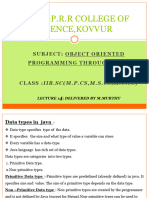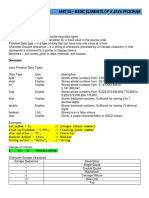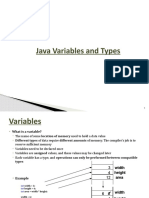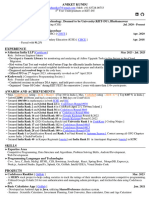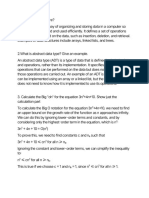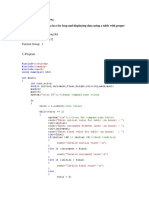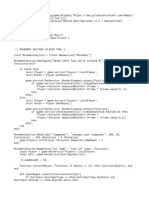0% found this document useful (0 votes)
10 views16 pagesJavaDT 10 Combined
The document outlines the rules for declaring variables in Java, including case sensitivity, naming conventions, and restrictions on keywords and class names. It also explains the different data types in Java, such as integral, float, char, and boolean, along with their respective literals. Additionally, it discusses the importance of data storage and the representation of characters using ASCII and Unicode.
Uploaded by
hofele5896Copyright
© © All Rights Reserved
We take content rights seriously. If you suspect this is your content, claim it here.
Available Formats
Download as PDF, TXT or read online on Scribd
0% found this document useful (0 votes)
10 views16 pagesJavaDT 10 Combined
The document outlines the rules for declaring variables in Java, including case sensitivity, naming conventions, and restrictions on keywords and class names. It also explains the different data types in Java, such as integral, float, char, and boolean, along with their respective literals. Additionally, it discusses the importance of data storage and the representation of characters using ASCII and Unicode.
Uploaded by
hofele5896Copyright
© © All Rights Reserved
We take content rights seriously. If you suspect this is your content, claim it here.
Available Formats
Download as PDF, TXT or read online on Scribd
/ 16










